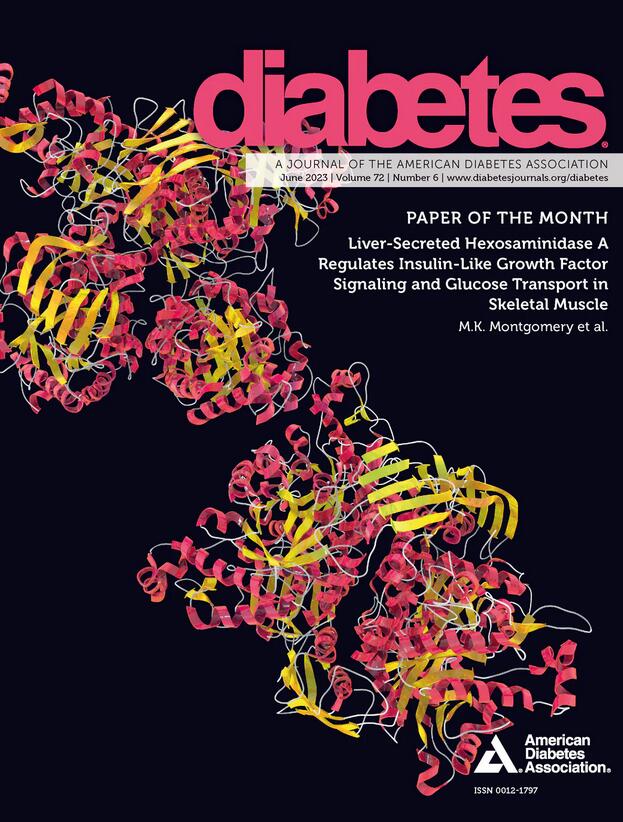81-OR: Hide and Seek—Modulating PDL1 and HLA Class I Expression to Protect Human β-Cells in T1D
IF 7.5
1区 医学
Q1 ENDOCRINOLOGY & METABOLISM
引用次数: 0
Abstract
Introduction and Objective: In type 1 diabetes (T1D), β-cells co-orchestrate their own demise by increasing their visibility to the immune system. The balance between HLA Class I and PDL1 expression is particularly critical: β-cells in T1D overexpress HLA Class I, increasing antigen presentation and immune targeting, but also upregulate PDL1, which promotes immune self-tolerance. Strategies to dissociate these mechanisms may aid development of novel T1D therapies. Methods: To study the misguided immune and β-cell dialogue in a relevant and scalable manner, we established three in vitro islet-immune injury models by culturing spheroids from primary human islets with proinflammatory cytokines, activated peripheral blood mononuclear cells or HLA-A2-restricted preproinsulin-specific cytotoxic T lymphocytes. We then modulated activity or expression of putative targets to investigate their effects on PDL1 and HLA Class I expression, β-cell function, survival and T cell infiltration. Results: In the established models, declining β-cell health manifested as increased basal and decreased glucose-stimulated insulin release, reduced intracellular insulin, loss of the first-phase insulin response and elevated proinsulin-to-insulin ratios. 3D microscopy revealed increased HLA Class I and PDL1 expression, and β-cell death. Extensive T cell infiltration and proinflammatory cytokine secretion confirmed immune activation in co-culture models. Liraglutide and HLA Class I blocking antibodies demonstrated anti-inflammatory and immune-protective effects, serving as controls for future studies. We are currently investigating TYK2-inhibitors and STAT2 knockdown as strategies for decoupling HLA Class I and PDL1 expression and immune protection. Our preliminary results shows TYK2 inhibition can protect islets from proinflammatory cytokine damage. Conclusion: The described biomimetic islet-immune assays provide scalable in vitro tools for studying interventions that can protect the β-cells from the immune-mediated attack that leads to T1D. Disclosure S. Jawurek: None. A.C. Title: None. C. Rufer: None. F. Forschler: Employee; InSphero AG. D.L. Eizirik: Advisory Panel; InSphero. B. Yesildag: Other Relationship; Novo Nordisk, Boehringer-Ingelheim, Eli Lilly and Company, Biomea Fusion, Biosplice Therapeutics, Abata Therapeutics, AstraZeneca, Amgen Inc.81-OR: Hide and seek调节PDL1和HLA I类表达保护T1D人β-细胞
简介和目的:在1型糖尿病(T1D)中,β细胞通过增加其对免疫系统的可见性来协调自身的死亡。HLA I类和PDL1表达之间的平衡尤为关键:T1D中的β细胞过表达HLA I类,增加抗原呈递和免疫靶向,但也上调PDL1,从而促进免疫自身耐受。分离这些机制的策略可能有助于开发新的T1D治疗方法。方法:为了研究被误导的免疫和β细胞对话,我们建立了三种体外胰岛免疫损伤模型,通过培养来自原代人胰岛的球体,分别含有促炎细胞因子、活化的外周血单个核细胞或hla - a2限制性胰岛素前特异性细胞毒性T淋巴细胞。然后,我们调节了假设靶点的活性或表达,以研究它们对PDL1和HLA I类表达、β细胞功能、存活和T细胞浸润的影响。结果:在已建立的模型中,β细胞健康状况的下降表现为葡萄糖刺激的基础胰岛素释放增加和减少,细胞内胰岛素减少,第一阶段胰岛素反应丧失,胰岛素原与胰岛素比值升高。3D显微镜显示HLA I类和PDL1表达增加,β细胞死亡。广泛的T细胞浸润和促炎细胞因子分泌证实了共培养模型的免疫激活。利拉鲁肽和HLA I类阻断抗体显示出抗炎和免疫保护作用,可作为未来研究的对照。我们目前正在研究tyk2抑制剂和STAT2敲低作为解耦HLA I类和PDL1表达和免疫保护的策略。我们的初步结果表明TYK2抑制可以保护胰岛免受促炎细胞因子损伤。结论:所描述的仿生胰岛免疫试验为研究干预措施提供了可扩展的体外工具,可以保护β细胞免受导致T1D的免疫介导攻击。S. Jawurek:没有。交流标题:无。C. Rufer:没有。F. Forschler:雇员;InSphero AG)。D.L. Eizirik:咨询小组;InSphero。B. Yesildag:其他关系;诺和诺德、勃林格殷格翰、礼来、Biomea Fusion、Biosplice Therapeutics、Abata Therapeutics、阿斯利康、安进公司。
本文章由计算机程序翻译,如有差异,请以英文原文为准。
求助全文
约1分钟内获得全文
求助全文
来源期刊

Diabetes
医学-内分泌学与代谢
CiteScore
12.50
自引率
2.60%
发文量
1968
审稿时长
1 months
期刊介绍:
Diabetes is a scientific journal that publishes original research exploring the physiological and pathophysiological aspects of diabetes mellitus. We encourage submissions of manuscripts pertaining to laboratory, animal, or human research, covering a wide range of topics. Our primary focus is on investigative reports investigating various aspects such as the development and progression of diabetes, along with its associated complications. We also welcome studies delving into normal and pathological pancreatic islet function and intermediary metabolism, as well as exploring the mechanisms of drug and hormone action from a pharmacological perspective. Additionally, we encourage submissions that delve into the biochemical and molecular aspects of both normal and abnormal biological processes.
However, it is important to note that we do not publish studies relating to diabetes education or the application of accepted therapeutic and diagnostic approaches to patients with diabetes mellitus. Our aim is to provide a platform for research that contributes to advancing our understanding of the underlying mechanisms and processes of diabetes.
 求助内容:
求助内容: 应助结果提醒方式:
应助结果提醒方式:


